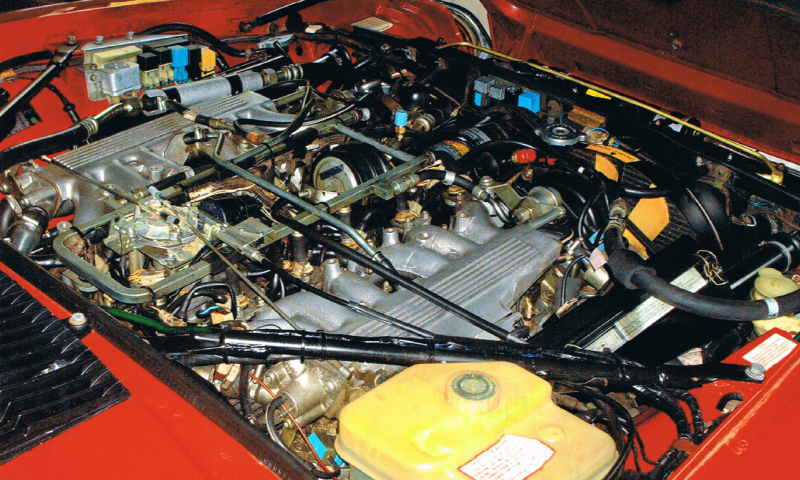Most of the cars I've owned were under the $500 mark until I moved out here 4-years ago. That means that they were usually old enough to have "no emissions" or they had the "80's rats nest" vacuum rack that covered my engine like a bowl of thick, wet, black, spaghetti. The there were the occasions when I'd go for a walk in a junkyard and stop to take a look under the hood of an 80's Honda! Holy smokes, I bet those ended up in the junk yard just because no one could FIND the engine in all that mess.
Thinking back to my wife's 2001 Corolla, there was none of that. Just your typical fuel lines and wires... Again with my wife's 2004 Fiat Panda, and the 2001 V40 turbo, and so on.
Where did the "rats nest" go? When did it happen?
And what the heck did they "do" in the first place?
They sucked. Get it? Vacuum? Thanks. I'll be here all week.
The rats nests hung on longer on turbo cars. They were a way to control emissions largely, without being worried about a pesky thing such as "let's just get a good state of tune on this ECU in the first place."
I think the FD RX7 is the last "rat's nest" i can think of.
The MX6 GTs were rather bad as well. The thing with those, however, is that it doesn't LOOK bad on the surface, because it's all tucked behind the intake manifold. Poke your head back there and it's horrifying.
Here's how i fix it:

Then don't put any of that E36 M3 back. The ECU doesn't care if all the solenoids those connect to are actually doing anything, just that they're connected electrically.

pres589
SuperDork
10/18/13 1:59 p.m.
In reply to Swank Force One:
I think you're forgetting the Millenia S, I believe they had a whole pile of this stuff going on.
When I think of Vacuum rats nests I think of 80's toyotas
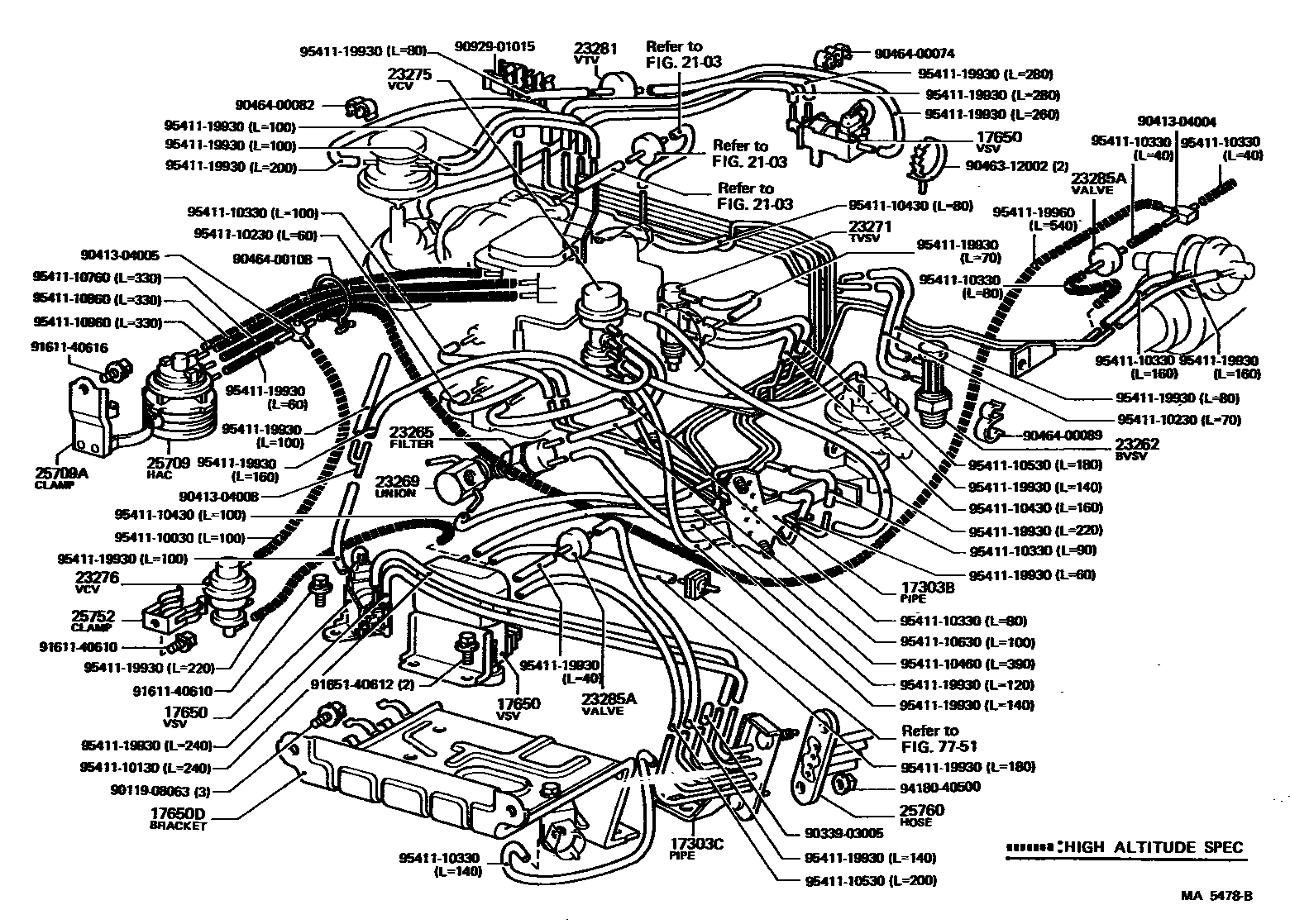
What a clusterberkeley.
pres589 wrote:
In reply to Swank Force One:
I think you're forgetting the Millenia S, I believe they had a whole pile of this stuff going on.
Ehhh.... those weren't so much rat's nest of vacuum lines as much as they were just clusterberkeleys in general. Seriously, berkeley that motor. I will never understand why anyone would ever think it would be a good idea to do anything with it.
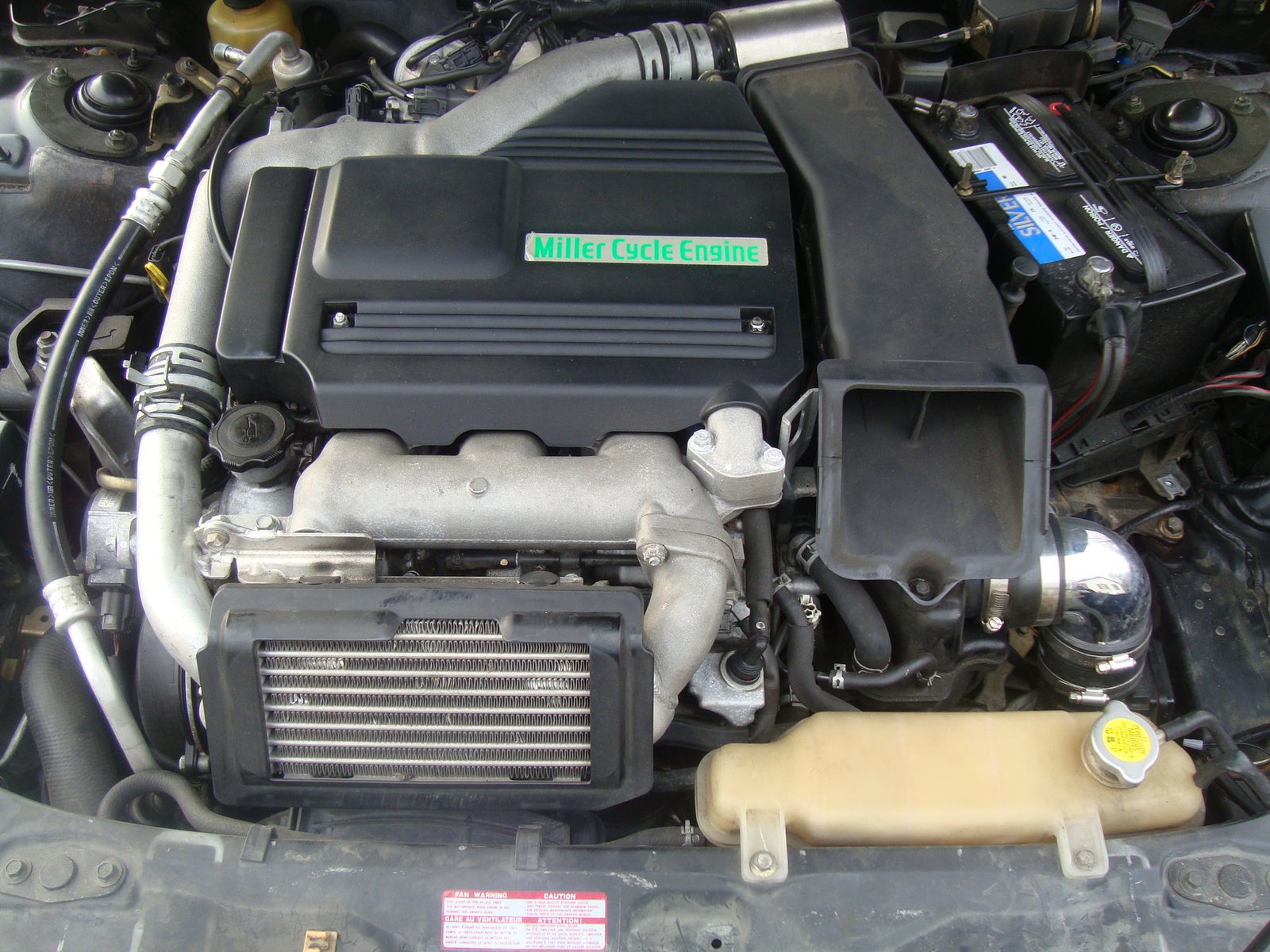

Ian F
UltimaDork
10/18/13 2:03 p.m.
In reply to Hungary Bill:
Say thank you to modern computerized fuel injection, which had pretty much become standard equipment by the early 90's.
You ain't seen nothing till you've worked on an FD RX-7.
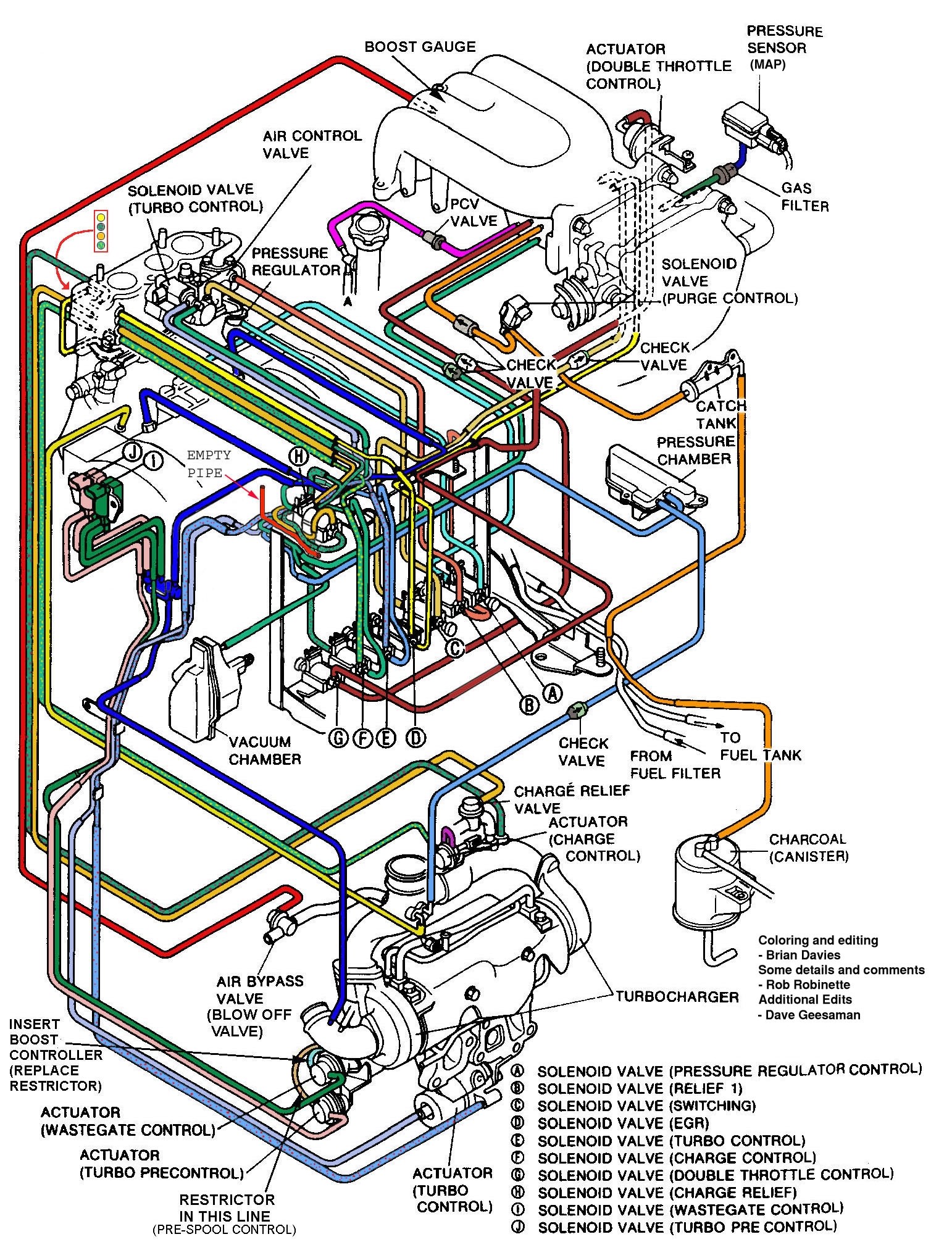
Thank you modern computerized fuel injection!
I did remove a rats nest from an FC once. Man oh man she was a dream to work on after that. It looked a lot like the FD picture there, but no turbo goodies.
I DID start another removal on my 87 Toyota 22r... didn't get very far 
Take a look at a 307 Olds V8 in the 80's 
I think the CVCC Honda wins this contest. That was basically vacuum computer controlled engine management.


DrBoost
PowerDork
10/18/13 6:08 p.m.
I always think of 80's and early 90's AMC I6s. Maybe because I cut my teeth in a Jeep dealership and we still saw lots of AMC stuff.
Most of what all of those solenoids and switches did was control ignition timing at various times, EGR function at various times, and evap control at various times. They might not want ignition advance at all until the engine warmed up, nor did they want EGR, and at some conditions they might want manifold vacuum to the advance and other times ported vacuum, and so on. Iterate that out a lot.
Now, the computer controls ignition timing entirely, the computer controls evap solenoids, and a lot of cars don't even have EGR valves anymore because they do that internally with variable cam timing but if they do then the EGR is computer controlled as well.
Instead of hoses, you have a 60-pin wiring harness to the engine.
Some people will bitch about that too.
Knurled wrote:
Now, the computer controls ignition timing entirely, the computer controls evap solenoids, and a lot of cars don't even have EGR valves anymore because they do that internally with variable cam timing but if they do then the EGR is computer controlled as well.
Instead of hoses, you have a 60-pin wiring harness to the engine.
Some people will bitch about that too.
Not me! The only job that the computer can do that I don't like is controlling the throttle valve, that's blurring the master (me) slave (computer) relationship a bit to much.
After seeing those mazda vacuum diagrams, I will never complain about SAAB c900 vacuum hoses again.
Kenny_McCormic wrote:
I think the CVCC Honda wins this contest. That was basically vacuum computer controlled engine management.

as a former owner of a 1985 Honda Civic 1500 S, i can relate to that picture. When we got it someone was in the middle of changing out the head. So my dad and i got quite familiar with that diagram and the mess of vacuum lines. Bleh. So many hours spent on that haha

HappyAndy wrote:
After seeing those mazda vacuum diagrams, I will never complain about SAAB c900 vacuum hoses again.
SAABs have the problem of typical European biodegradable rubber.
The FD was a unique experience, in that not only was there a lot of stuff going on, but most of the connections did not have barbed ends, just straight tube. Great idea on a car that has forced induction. For extra fun, much of those solenoids controlled the twin turbo system, because it had to prespool the secondary turbo before it could gate it into the system, and it was a "dumb" open loop system, meaning there are time constraints. The timing of opening and closing various gates had to be just right. A lot of those vacuum hoses had calibrated restrictions in them, so you couldn't just replace them with generic hose. Not if you wanted the stock boost pattern, anyway!
'96-up FDs did away with that and had a kind of solenoid module where most of that was integrated into one big assembly that wires and hoses went into.
My fiat had plastic biodegradable vacuum hoses. Look at them wrong and they would crack off at the end.
Hungary Bill wrote:
I DID start another removal on my 87 Toyota 22r... didn't get very far 
Yeah, berkeley that noise, man.

The only vacuum lines left on the yugo other than the brake booster and distributor line(with the source switch circuit removed) is the altitude compensator, because I don't understand how it works and its fairly self contained.
Hungary Bill wrote:
I did remove a rats nest from an FC once. Man oh man she was a dream to work on after that. It looked a lot like the FD picture there, but no turbo goodies.
I replaced most of the vacuum hoses in my old FC (now Dave Estey's) with silicone and damn is there a lot! Some of the hoses connected to old, brittle plastic emissions doohickies that were a major POS to remove. Getting to all of them would have required removing at least the upper intake manifold.
This scene is what greeted me when I removed the air filter box on my '94 Alfa Romeo 164. Like the FC, many of the vacuum and coolant lines are being replaced with silicone to better withstand the intense heat.
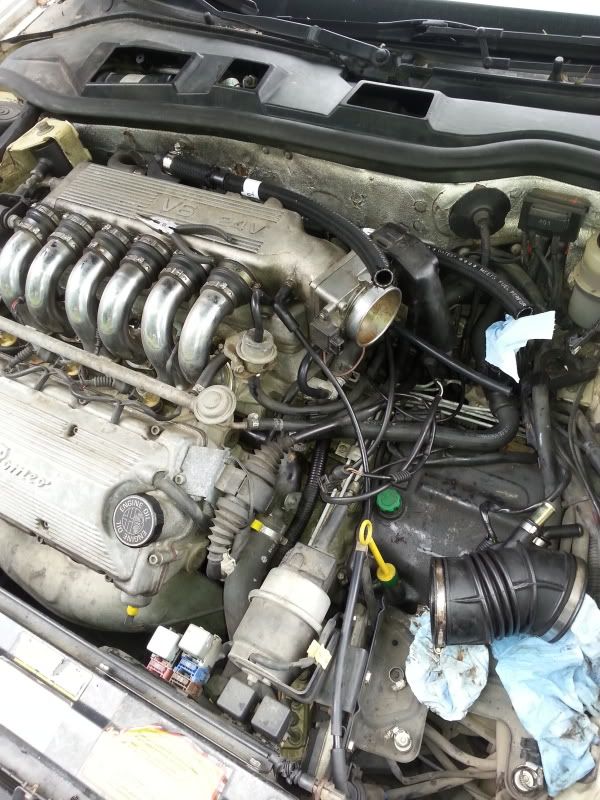
Gearheadotaku wrote:
Take a look at a 307 Olds V8 in the 80's 
pretty much any GM passenger car engine was like that in the 80's, at least until they figured out fuel injection.
Mopars in the late 70's and early 80's were pretty bad, too... they had vacuum switches that operated other vacuum switches via thermostatically controlled vacuum switches...
at least they did not try to do what Porsche did with the 928. Vacuum actuated power locks never seemed like a good idea

















